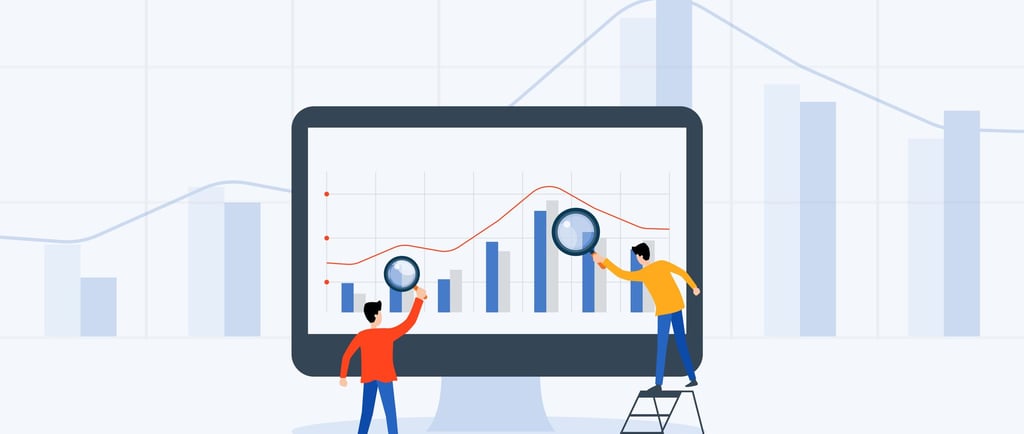
Unlocking Marketing Analytics Success


Your Key to Unlocking Marketing Analytics Success
Marketing analytics has become indispensable in today's digital age, empowering businesses to make data-driven decisions, optimize marketing strategies, and maximize return on investment (ROI). While there are sophisticated marketing analytics tools available, Excel remains a powerful and accessible tool for marketers to analyze data, derive insights, and drive marketing effectiveness. In this article, we'll explore how businesses can leverage Excel for marketing analytics, from tracking campaign performance to analyzing customer behavior and optimizing marketing spend.
The Significance of Marketing Analytics:
Marketing analytics involves the measurement, analysis, and interpretation of marketing performance data to inform decision-making and drive business growth. By analyzing key metrics and trends, marketers can gain insights into consumer behavior, campaign effectiveness, and market opportunities, enabling them to optimize marketing strategies and achieve marketing objectives.
Leveraging Excel for Marketing Analytics:
Excel provides marketers with a versatile platform for conducting various marketing analytics tasks. Here's how Excel can be utilized for marketing analytics:
Campaign Performance Tracking: Excel enables marketers to track and analyze the performance of marketing campaigns across different channels, such as email, social media, search advertising, and content marketing. Spreadsheets can be used to record campaign metrics, such as impressions, clicks, conversions, and ROI, allowing marketers to assess the effectiveness of their marketing efforts.
Customer Segmentation and Profiling: Excel allows marketers to segment customers based on demographic, behavioral, and psychographic factors, and create customer profiles to better understand their preferences, needs, and purchase behavior. By analyzing customer data in Excel, marketers can tailor marketing messages and offers to specific customer segments, improving targeting and engagement.
ROI Analysis: Excel facilitates ROI analysis by comparing marketing expenditures to revenue generated or other key performance indicators (KPIs). Marketers can use Excel to calculate metrics such as return on ad spend (ROAS), customer acquisition cost (CAC), and customer lifetime value (CLV), helping them assess the profitability and effectiveness of marketing initiatives.
Campaign Optimization: Excel supports campaign optimization by analyzing performance data and identifying opportunities for improvement. Marketers can use Excel's analytical features, such as PivotTables, charts, and regression analysis, to identify trends, patterns, and correlations in campaign data, and make data-driven decisions to optimize targeting, messaging, and budget allocation.
Advanced Features for Excel-Based Marketing Analytics:
Excel offers advanced features and functionalities to enhance marketing analytics capabilities:
Data Visualization: Excel's charting capabilities allow marketers to visualize marketing data using various chart types, such as line charts, bar charts, pie charts, and scatter plots, making it easier to interpret and communicate insights to stakeholders.
Predictive Analytics: Excel supports predictive analytics by enabling marketers to build forecasting models and predictive algorithms to anticipate future trends and outcomes based on historical data and market insights.
Data Integration: Excel can be integrated with other data sources, such as CRM systems, web analytics platforms, and marketing automation tools, to access real-time marketing data and streamline data analysis processes.
Scenario Analysis: Excel facilitates scenario analysis by allowing marketers to model different marketing scenarios and assess their potential impact on key metrics and objectives, helping them make informed decisions and mitigate risks.
Best Practices for Excel-Based Marketing Analytics:
To maximize the effectiveness of marketing analytics in Excel, marketers should adhere to best practices such as:
Data Quality: Ensure data accuracy, completeness, and consistency by validating and cleaning marketing data before analysis to ensure reliable insights and decision-making.
Standardization: Develop standardized templates and processes for marketing analytics in Excel to ensure consistency and comparability across campaigns, channels, and time periods.
Continuous Learning: Stay informed about best practices, new features, and advanced techniques in Excel to enhance marketing analytics capabilities and stay ahead of the curve in a rapidly evolving digital landscape.
Collaboration: Foster collaboration among marketing teams and stakeholders by sharing Excel files, reports, and insights via cloud-based collaboration platforms, facilitating knowledge sharing and alignment of marketing goals and strategies.
Conclusion:
Excel's versatility and functionality make it a valuable tool for marketers seeking to analyze data, derive insights, and drive marketing effectiveness. By leveraging Excel for marketing analytics, marketers can track campaign performance, analyze customer behavior, and optimize marketing strategies to achieve marketing objectives and drive business growth. Whether you're a digital marketer, marketing analyst, or marketing manager, Excel empowers you to harness the power of data and make informed decisions to succeed in today's competitive marketing landscape.
